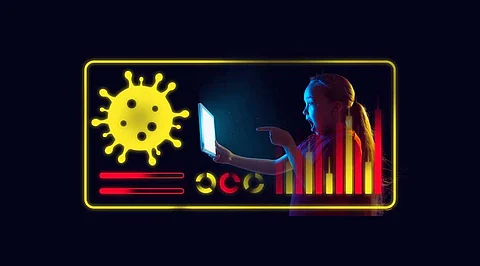

The pandemic is compelling governments and societies to use digital technologies to respond to the crisis. Consider that in alignment with medical professionals' recommendations to stay home, digital communication channels are among the only ways governments can provide reliable information on global and national COVID-19 developments. Additionally, technologies have also shown utility in allowing people to connect in a digital format, thereby slowing the spread of the virus.
So, are these efforts helping? And if so, which technologies have been the most notable?
With vaccines being crucial to the battle against the COVID-19 virus, it seemed counterintuitive for extra doses to go to waste. The Dr. B platform overcame this by allowing people to sign up for available vaccines. By using location-specific parameters, the platform could readjust algorithms to highlight vaccine availability to those in need. Those in "at-risk" groups could also receive priority under the same program.
In this Dr. B review, patients were quick to share their beliefs that this platform enabled many more people to obtain the vaccine than would have been possible otherwise. Furthermore, it eliminated much of the frustration that came with the old distribution system.
The pandemic also paved the way for increased drone usage. With drones, companies could transport test kits and medical supplies, thereby shortening delivery times and improving response times for medical authorities. In other countries, drones also found a use for their ability to dispel disinfectant chemicals in public spaces and support epidemic prevention vehicles by traveling to infected areas. Some governments also equipped their drones with thermal imaging technology to detect people suffering from fever/flu symptoms in China.
Similarly, robotics, like drones, were seen checking temperatures and identifying and disinfecting people in public spaces, thereby eliminating human contact. In Wuhan, the epicenter of the COVID-19 outbreak, robots were taking vital signs, delivering medications, and entertaining quarantined patients. The result was hospital robots have proven to provide much-needed relief to medical staff and other healthcare workers while they continue to care for affected patients.
Many people wonder how big data can help us deal with this pandemic. After all, most see big data for its ability to allow businesses to analyze their customers' purchasing habits to personalize products for them. With millions of cases confirmed worldwide at the pandemic's peak, big data allowed for rapid information collected from a large population and real-time COVID-19 information.
People, for example, are finally realizing that loss of taste or smell is an early indicator of infection. Because large amounts of data show that many patients have this symptom, medical institutions could use big data to help better distribute resources.
5G can help to contain the virus outbreak indirectly. Massive bandwidth, fast speeds, and low latency enable seamless communication in hospitals and emergency command centers.
It has the potential to serve as a foundation for implementing the technologies mentioned above. Following the recovery from the COVID-19 outbreak, China has announced plans to build at least 500,000 5G base stations.
Another technology that helped fight the pandemic was Bluetooth and associated mobile applications. For example, you might be familiar with the Covid-19 alert apps that came to light to share random codes with nearby phones via Bluetooth exchange technology. The app uses code to determine whether a user has coronavirus exposure. Codes are generated every 5 minutes and cannot be used to identify the user, meaning no one has access to the user's name, address, contact information, location, or health information. Many governments strongly encouraged their people to download this app to help stop the spread of the virus.
In several countries, these Covid-19 Alert apps are now available for download worldwide on the Google Play Store and the Apple Store.
As you can see, these technologies were a big help in fighting against the pandemic. From big data usage for spotting trends to Bluetooth alerts on mobile apps, many innovations helped to ensure that humans were in a place to continue working and receiving an education while at home and those infected by the virus had the medicine and tools they needed to get better.
Together, these technologies have not only proved to benefit us now but have shown promise in battling future crises.
Join our WhatsApp Channel to get the latest news, exclusives and videos on WhatsApp
_____________
Disclaimer: Analytics Insight does not provide financial advice or guidance. Also note that the cryptocurrencies mentioned/listed on the website could potentially be scams, i.e. designed to induce you to invest financial resources that may be lost forever and not be recoverable once investments are made. You are responsible for conducting your own research (DYOR) before making any investments. Read more here.
